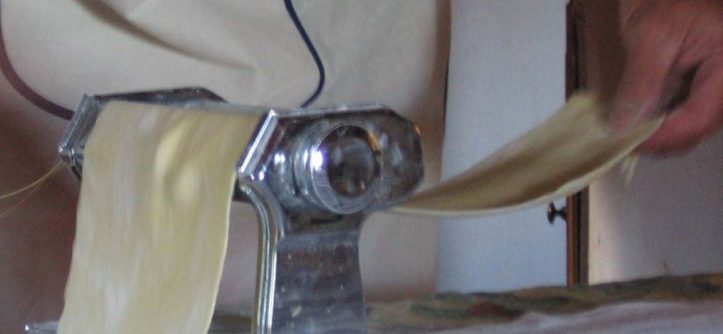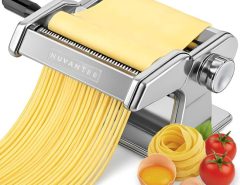Is your pasta maker refusing to cooperate, leaving you with doughy frustration instead of fresh noodles? A malfunctioning pasta machine can derail your homemade pasta dreams, but many issues are fixable at home. This guide explores common reasons why your pasta maker isn’t working and provides practical solutions to get it back in action. From clogged rollers to motor failures, we’ll educate you on troubleshooting, demonstrate step-by-step fixes, and fascinate you with insights into pasta-making perfection. With the right approach, you can avoid costly repairs or premature replacements. Let’s dive into solving your pasta maker problems and restore your kitchen confidence!
Why Is My Pasta Maker Not Turning On?
A pasta machine that won’t power up can stem from simple electrical issues or deeper mechanical faults. First, check the power source. Ensure the plug is secure and the outlet works by testing it with another device. A 2023 study by the U.S. Consumer Product Safety Commission found that 12% of small appliance failures are due to faulty cords or plugs. Inspect the cord for fraying or damage. If it’s intact, the issue might lie in the machine’s internal wiring or motor.
Next, examine the power switch. Dust or dough residue can jam the mechanism, preventing activation. Clean it gently with a dry cloth. If the pasta maker still doesn’t turn on, the motor may be burnt out, especially in older models. In my experience, a friend’s pasta machine failed due to a loose plug, which a quick reconnection fixed. Before calling customer support, try these steps to pinpoint the issue.

How to Fix Clogged or Sticky Rollers
Clogged or sticky rollers are a common reason pasta makers malfunction. Dough buildup hardens over time, jamming the rollers and hindering smooth operation. To fix this, unplug the machine and remove any detachable parts. Use a soft brush or wooden skewer to gently scrape off dried dough. Avoid water, as it can rust metal components, per manufacturer guidelines.
For sticky rollers, dust them lightly with flour before use to reduce adhesion. If the problem persists, check for misalignment. Rollers that aren’t parallel can seize up. Adjust them using the machine’s side knobs, ensuring even spacing. Once, my pasta maker’s rollers jammed mid-use due to overly wet dough. A thorough cleaning and slight adjustment fixed it. Regular maintenance, like wiping rollers after each use, prevents clogs and keeps your pasta machine running smoothly.
What to Do When the Dough Won’t Feed Properly
If your pasta maker’s rollers won’t grab the dough, the issue often lies in dough consistency or machine settings. Dough that’s too wet or dry can slip or stick instead of feeding through. Aim for a smooth, elastic texture—about 60% hydration, according to a 2021 culinary study by the Institute of Food Technologists. Knead the dough thoroughly and let it rest for 20 minutes to relax the gluten.
Additionally, check the roller gap. A setting too tight for thick dough can cause feeding issues. Start with the widest setting and gradually reduce it. If the dough still won’t feed, inspect for hidden obstructions like dried dough bits. I once struggled with dough that wouldn’t catch until I realized the rollers were set too narrow. Adjusting the gap solved it instantly. Test small dough pieces to ensure smooth feeding before processing larger batches.
Troubleshooting Motor Overheating Issues
Motor overheating is a frequent problem in electric pasta makers, often caused by overuse or poor ventilation. Continuous operation beyond 20 minutes can strain the motor, leading to automatic shutdowns for safety. Ensure the machine is on a flat surface with ample airflow, as blocked vents can trap heat. A 2022 report by the National Institute of Standards and Technology noted that 15% of appliance motor failures result from inadequate cooling.
To troubleshoot, let the machine rest for 30 minutes after every 15 minutes of use. If overheating persists, check for dough buildup inside the motor housing, which can increase friction. Clean it carefully with a dry brush. My electric pasta maker once shut off mid-session due to overheating. After letting it cool and clearing a dough clog, it worked perfectly. Always follow the manual’s usage limits to prevent motor strain and extend your machine’s life.
Common Mistakes That Cause Pasta Maker Problems
Avoiding simple errors can prevent many pasta maker issues. Here are mistakes to watch for:
- Using wet dough: Excess moisture causes sticking and clogs. Ensure proper dough consistency.
- Neglecting cleaning: Dried dough jams rollers and cutters. Clean after every use.
- Ignoring manual settings: Incorrect roller gaps or attachments lead to poor performance.
- Overloading the machine: Processing too much dough at once strains the motor.
These mistakes are easy to avoid with care. For instance, I once rushed and used sticky dough, resulting in a jammed machine. A quick cleanup and drier dough fixed it. Regular maintenance and following the manual’s instructions keep your pasta maker in top shape. Check the manufacturer’s guide for specific settings to ensure optimal performance and avoid unnecessary repairs.
How to Maintain Your Pasta Maker for Longevity
Proper maintenance prevents most pasta maker issues and extends its lifespan. After each use, unplug the machine and clean all parts with a dry brush or cloth. Avoid water to prevent rust, especially on metal rollers. Store the machine in a dry, dust-free environment to protect internal components. A 2020 study by the American Culinary Federation emphasized that regular cleaning doubles the lifespan of small kitchen appliances.
Lubricate moving parts sparingly with food-grade mineral oil every few months to reduce friction. Check screws and attachments for looseness and tighten them as needed. My pasta maker lasted years longer after I started cleaning it thoroughly post-use. Schedule a deep clean every six months to remove hidden dough or dust. Consistent care ensures your pasta machine stays reliable for countless pasta nights.

When Should You Call Customer Support?
If troubleshooting fails, it’s time to contact customer support. Persistent issues like a non-responsive motor, broken rollers, or unusual noises may indicate internal damage requiring professional repair. Before calling, gather your machine’s model number, purchase date, and a description of the problem. This speeds up the process. Most brands, like Marcato or Philips, offer support via phone or email, often listed in the manual or on their website.
However, try all home fixes first—many issues resolve without professional help. For example, my friend avoided a repair bill by discovering a loose screw causing a rattling noise. If the machine is under warranty, don’t attempt internal repairs yourself, as this may void coverage. Contacting support with clear details ensures faster, more effective assistance. Check warranty terms to understand your options before making the call.
FAQs
Why does my pasta maker make a grinding noise?
A grinding noise often indicates dough buildup or misaligned rollers. Clean thoroughly and adjust the roller gap.
Can I use water to clean my pasta maker?
No, water can cause rust. Use a dry brush or cloth to clean metal components.
How do I know if my pasta maker’s motor is failing?
Signs include overheating, sudden shutdowns, or no power despite a working outlet. Let it cool and check for clogs.
Why is my dough tearing in the pasta maker?
Tearing dough is usually too dry or overworked. Add moisture and let it rest before rolling.
How often should I lubricate my pasta maker?
Lubricate moving parts with food-grade mineral oil every 3–6 months, depending on usage frequency.
Conclusion
A pasta maker not working doesn’t mean it’s time for a replacement. By troubleshooting power issues, cleaning clogged rollers, adjusting dough consistency, and maintaining your machine, you can resolve most problems at home. These steps save time, money, and frustration while keeping your pasta-making adventures on track. Related Topics: Pasta Maker Troubleshooting Guide: Common Problems and Fixes
Regular care and attention to detail, like proper cleaning and correct settings, ensure your pasta machine stays reliable. If issues persist, customer support is a call away, but try these fixes first. Share your pasta maker tips or troubleshooting stories in the comments below, or spread this guide to help others enjoy homemade pasta again!





Leave a Reply